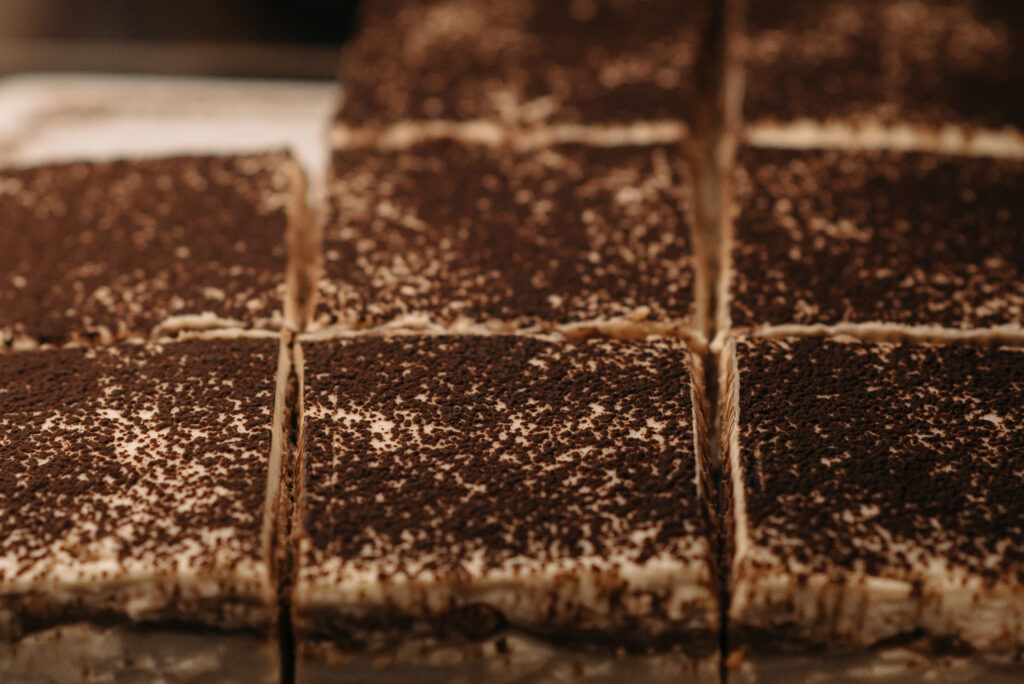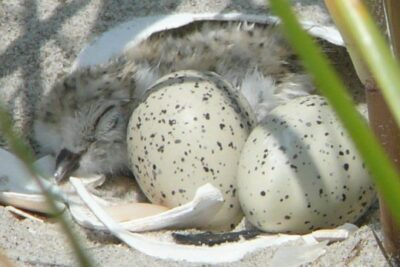
Can Coffee Grounds Boost Succulent Growth as Fertilizer?

Succulents have become increasingly popular in recent years as indoor and outdoor plants due to their unique and striking appearance, as well as their low maintenance requirements. These plants are known for their ability to store water in their leaves, stems, and roots, allowing them to survive in arid conditions. However, like any other plant, succulents still require proper care and nutrition to thrive. One common debate among succulent enthusiasts is whether coffee grounds can be used as a natural fertilizer to promote their growth.
We will explore the potential benefits and drawbacks of using coffee grounds as a fertilizer for succulents. We will discuss the nutritional content of coffee grounds, their impact on soil pH and drainage, as well as any potential risks or negative effects. Additionally, we will provide tips on how to properly use coffee grounds as fertilizer for succulents, including the recommended frequency and amount. By the end of this article, you will have a better understanding of whether coffee grounds can indeed boost succulent growth and how to incorporate them into your succulent care routine.
- Yes, coffee grounds can boost succulent growth as fertilizer
- Coffee grounds provide essential nutrients for succulents
- The organic matter in coffee grounds helps improve soil structure for succulents
- Coffee grounds can increase the acidity of the soil, which is beneficial for some succulent varieties
- Adding coffee grounds to the soil can help retain moisture, which is crucial for succulents
- Coffee grounds can prevent fungus gnats, which can harm succulents
- Using coffee grounds as fertilizer is an affordable and eco-friendly option for succulent growth
- Coffee grounds can be mixed with other organic materials to create a balanced and nutrient-rich succulent fertilizer
- Applying coffee grounds to the soil around succulents can promote healthier root development
- Coffee grounds can be used as a top dressing for succulents to provide slow-release nutrients
- Frequently Asked Questions
Yes, coffee grounds can boost succulent growth as fertilizer
Many succulent enthusiasts are always on the lookout for new and effective ways to nourish their beloved plants. One method that has gained popularity in recent years is the use of coffee grounds as a natural fertilizer. So, can coffee grounds really boost succulent growth? The answer is a resounding yes!
Why are coffee grounds beneficial for succulents?
Coffee grounds are packed with nutrients that can benefit succulents in several ways. First and foremost, they contain nitrogen, which is an essential macronutrient for plant growth. Nitrogen helps promote healthy leaf development and vibrant green color in succulents.
Furthermore, coffee grounds are also rich in other nutrients like potassium, phosphorus, and magnesium. These micronutrients are crucial for overall plant health and contribute to strong roots, sturdy stems, and increased resistance to diseases.
How to use coffee grounds on succulents
When using coffee grounds as fertilizer for succulents, it's essential to follow a few guidelines to ensure optimal results. Here's a step-by-step guide:
 Using Coffee Grounds as Succulent Fertilizer: Benefits & Guidelines
Using Coffee Grounds as Succulent Fertilizer: Benefits & Guidelines- Collect coffee grounds: Start by collecting used coffee grounds from your coffee maker or local coffee shop. Make sure to let them dry before use to prevent mold growth.
- Mix with potting soil: Combine the coffee grounds with the potting soil you typically use for your succulents. Aim for a ratio of 1 part coffee grounds to 3 parts potting soil.
- Apply to the soil: Gently sprinkle the coffee grounds and potting soil mixture around the base of your succulent, being careful not to cover the leaves. Avoid over-applying as it can lead to water retention and root rot.
- Water as usual: After applying the coffee grounds, water your succulent as you normally would, ensuring that the soil is adequately moist but not waterlogged.
Additional tips and considerations
While coffee grounds can undoubtedly benefit succulents, it's crucial to keep a few things in mind:
- Don't rely solely on coffee grounds: While coffee grounds offer some nutrients, they should not be the sole source of fertilization for your succulents. It's still essential to provide a balanced and varied diet for optimal growth.
- Monitor the pH level: Coffee grounds can be slightly acidic, so it's essential to monitor the pH level of your soil regularly. Succulents prefer a slightly acidic to neutral pH range.
- Observe your plants: Keep a close eye on your succulents after applying coffee grounds. If you notice any adverse effects such as leaf burn or discoloration, reduce the amount of coffee grounds used or discontinue use altogether.
Incorporating coffee grounds into your succulent care routine can provide an extra boost of nutrients for healthier and more vibrant plants. Just remember to use them in moderation, monitor soil pH, and observe your succulents' response. With proper usage, coffee grounds can indeed be a game-changer in your succulent fertilization efforts!
Coffee grounds provide essential nutrients for succulents
If you're a coffee lover and a succulent enthusiast, you may have wondered whether you can put your used coffee grounds to good use in your garden. Well, the answer is a resounding yes! Coffee grounds can indeed be used as a natural fertilizer to boost the growth of your succulents.
Why are coffee grounds beneficial for succulents, you may ask? Coffee grounds are rich in many essential nutrients that succulents need to thrive, including nitrogen, potassium, and phosphorus. These nutrients are vital for promoting healthy root development, enhancing overall growth, and increasing the plant's ability to resist diseases.
Furthermore, coffee grounds also help to improve soil structure. They act as a natural mulch, increasing water retention in the soil while allowing for proper drainage, which is crucial for succulents as they prefer well-draining soil. The organic matter in coffee grounds also enriches the soil, providing a fertile environment for your succulents to flourish.
It's important to note that while coffee grounds can be highly beneficial for succulents, they should be used in moderation. Too much coffee grounds can increase the acidity of the soil, which may not be ideal for some succulent varieties that prefer a slightly alkaline environment. Therefore, it's best to mix the coffee grounds with other organic matter, such as compost or coconut coir, to balance the pH levels.
 Can Succulent Fertilizer Also Benefit Other Plants?
Can Succulent Fertilizer Also Benefit Other Plants?How to use coffee grounds as fertilizer for succulents
Now that you know the benefits of using coffee grounds as a natural fertilizer, let's discuss how to incorporate them into your succulent care routine:
- Collect coffee grounds: Save your used coffee grounds instead of throwing them away. Make sure to let them cool down before handling.
- Prepare the soil: Mix the coffee grounds with well-draining soil, such as cactus potting mix or a blend of sand, perlite, and potting soil.
- Apply the mixture: Gently sprinkle the coffee ground mixture around the base of your succulents, avoiding direct contact with the leaves to prevent any potential burning.
- Water as usual: After applying the coffee ground mixture, water your succulents as you normally would. The coffee grounds will gradually release nutrients into the soil as they break down.
Remember, each succulent has unique care requirements, so it's essential to observe your plants and adjust the amount of coffee grounds accordingly. If you notice any signs of over-fertilization, such as yellowing leaves or stunted growth, reduce the amount of coffee grounds in your fertilizing routine.
Coffee grounds can be a fantastic and sustainable way to nourish your succulents. By providing essential nutrients, improving soil structure, and promoting healthy growth, coffee grounds can help your succulents thrive and flourish.
So, next time you make your morning cup of joe, don't toss those coffee grounds away - give them to your succulents and watch them grow!
The organic matter in coffee grounds helps improve soil structure for succulents
When it comes to caring for succulents, providing them with the right nutrients is crucial for their growth and overall health. While there are various commercial fertilizers available in the market, many succulent enthusiasts have turned to a more unconventional option - coffee grounds.
But can coffee grounds really boost succulent growth as a fertilizer?
The answer is yes, and here's why.
 Can Bearded Dragons Safely Consume Succulents as Part of Their Diet?
Can Bearded Dragons Safely Consume Succulents as Part of Their Diet?Coffee grounds are rich in organic matter, which can greatly benefit the soil structure for succulents. The organic matter helps improve the soil's drainage and aeration, two key factors that are essential for succulent growth. Succulents thrive in well-draining soil, as excessive moisture can lead to root rot and other problems. By incorporating coffee grounds into the soil, you can enhance its structure and create an environment that allows the roots to breathe.
Additionally, coffee grounds contain essential nutrients such as nitrogen, potassium, and phosphorus, which are vital for succulent growth. These nutrients are released slowly into the soil as the coffee grounds break down, providing a steady supply of nourishment to the plants over time.
Using coffee grounds as a fertilizer for succulents is also an eco-friendly option. By recycling coffee grounds, you can reduce waste and give your plants a natural boost. It's a win-win situation!
However, it's important to note that coffee grounds should be used in moderation. Too much coffee grounds can increase the acidity of the soil, which may not be suitable for succulents that prefer a slightly alkaline environment. It's recommended to mix coffee grounds with other organic matter or compost to balance the pH levels.
So, how should you use coffee grounds as a fertilizer for your succulents?
- Start by collecting used coffee grounds from your morning brew.
- Allow the coffee grounds to dry out completely to avoid any mold or fungal growth.
- Mix the dried coffee grounds with an equal amount of well-draining soil or compost.
- Gently incorporate the coffee grounds mixture into the top layer of soil around your succulents.
- Water your succulents as usual, ensuring not to overwater.
Final Thoughts
While coffee grounds can indeed boost succulent growth as a fertilizer, it's important to use them in moderation and consider the specific needs of your succulents. Incorporating coffee grounds into your succulent care routine can help improve soil structure, provide essential nutrients, and contribute to a more sustainable gardening practice.
 Do Succulents Actually Cleanse and Freshen Indoor Air?
Do Succulents Actually Cleanse and Freshen Indoor Air?So, next time you enjoy your cup of joe, remember that those coffee grounds could be a valuable resource for your succulents!
Coffee grounds can increase the acidity of the soil, which is beneficial for some succulent varieties
Many succulent enthusiasts are always on the lookout for natural and cost-effective ways to boost the growth of their plants. One popular method that has gained attention in recent years is using coffee grounds as fertilizer. But the question arises: can coffee grounds really enhance the growth of succulents?
The short answer is yes! Coffee grounds can actually benefit certain succulent varieties, thanks to their unique properties.
Increased Acidity
Coffee grounds have a slightly acidic pH, typically ranging from 6.0 to 6.8. This acidity can be advantageous for succulents that prefer acidic soil conditions. Some succulent species, such as certain types of Echeveria and Sedum, thrive in slightly acidic or neutral soil.
By incorporating coffee grounds into the soil, you can effectively increase its acidity, creating a more suitable environment for these specific succulents to grow and flourish.
Improved Drainage and Aeration
In addition to their acidity, coffee grounds can also enhance the soil's drainage and aeration properties. Succulents, being desert plants, require well-draining soil to prevent root rot and fungal diseases.
 Exploring the Symbolic Meanings of Giving Succulent Plants as Gifts
Exploring the Symbolic Meanings of Giving Succulent Plants as GiftsWhen coffee grounds are added to the soil, they act as an organic material that helps to loosen compacted soil and improve its structure. This allows water to flow freely through the soil, preventing excess moisture from accumulating around the roots.
The improved aeration provided by the coffee grounds also aids in the root respiration process, ensuring that the succulents receive enough oxygen for optimal growth.
Nutrient Boost
Coffee grounds contain essential nutrients that can benefit succulents. They are a good source of nitrogen, phosphorus, and potassium, which are vital for plant growth and development.
As the coffee grounds break down in the soil, these nutrients are gradually released, providing a slow and steady supply of nourishment to the succulents. This natural fertilization process promotes healthy foliage, vibrant blooms, and overall plant vigor.
- Tip: It's important to remember that moderation is key when using coffee grounds as fertilizer for succulents. While they offer numerous benefits, excessive use can result in nitrogen burn or over-acidification of the soil. A thin layer of coffee grounds mixed with regular potting soil is usually sufficient.
Incorporating coffee grounds into the soil can indeed boost the growth of certain succulent varieties. Their acidity, improved drainage and aeration properties, as well as the nutrient boost they provide, make coffee grounds a favorable option for succulent enthusiasts looking to enhance the health and vitality of their plants.
Adding coffee grounds to the soil can help retain moisture, which is crucial for succulents
When it comes to succulent care, one of the most important factors to consider is moisture retention in the soil. Succulents are known for their ability to store water in their leaves, stems, and roots, but they still need a consistent source of moisture to thrive.
Adding coffee grounds to the soil can be a beneficial practice for succulent growers. Coffee grounds act as a natural fertilizer and can help improve the overall health and growth of succulents. Plus, they're easily accessible and cost-effective.
 The Benefits of Succulents: Enhancing Your Home and Garden
The Benefits of Succulents: Enhancing Your Home and GardenWhy are coffee grounds beneficial for succulents?
Coffee grounds are rich in organic matter and contain essential nutrients that can enhance the soil quality for succulents. They provide a slow-release source of nitrogen, potassium, and phosphorus, which are essential for plant growth.
Moreover, coffee grounds can help improve soil structure by increasing its water-holding capacity. The organic matter in coffee grounds acts as a sponge, helping the soil retain moisture for a longer period. This is particularly beneficial for succulents, as they prefer well-draining soil but still require adequate moisture.
Additionally, coffee grounds can aid in drainage. The gritty texture of coffee grounds helps to break up compacted soil, allowing water to flow freely and preventing overwatering or root rot.
How to use coffee grounds as fertilizer for succulents
Using coffee grounds as a fertilizer for succulents is relatively simple. Here are a few steps to follow:
- Gather used coffee grounds: Collect coffee grounds from your morning brew or ask your local coffee shop for any leftover grounds they may have.
- Let the coffee grounds dry: Spread the coffee grounds out on a tray or a sheet of newspaper and let them dry for a day or two. This helps prevent the growth of mold or bacteria.
- Mix the coffee grounds with soil: Once the coffee grounds are dry, mix them into the soil surrounding your succulents. Aim for a ratio of 1 part coffee grounds to 3 parts soil.
- Water as usual: After incorporating the coffee grounds into the soil, water your succulents as you normally would. The coffee grounds will gradually release nutrients into the soil as they decompose.
It's important to note that while coffee grounds can be beneficial for succulents, moderation is key. Too much coffee grounds can create an imbalance in the soil's pH level, leading to nutrient deficiencies or toxicity. Therefore, it's recommended to use coffee grounds as a supplement to a well-balanced fertilizer routine.
So, the next time you enjoy your morning cup of coffee, consider saving those grounds for your succulents. Not only will you be reducing waste, but you'll also be providing your plants with a natural boost of nutrients and moisture.
Coffee grounds can prevent fungus gnats, which can harm succulents
 Edible Potential of Succulents: Can You Eat These Trendy Plants?
Edible Potential of Succulents: Can You Eat These Trendy Plants?One of the biggest challenges that succulent enthusiasts face is dealing with fungus gnats. These small, flying insects can quickly infest succulent plants, causing damage to their delicate roots and impeding their growth. However, did you know that coffee grounds can be a natural and effective solution to prevent fungus gnats?
How do coffee grounds prevent fungus gnats?
Coffee grounds contain a substance called caffeine, which is toxic to fungus gnats. When coffee grounds are applied to the soil of succulent plants, the caffeine seeps into the soil and acts as a natural deterrent, keeping the gnats away. This can help protect your succulents from potential infestations and promote their healthy growth.
How to use coffee grounds as a natural repellent?
To utilize coffee grounds as a natural repellent for fungus gnats, follow these simple steps:
- Collect used coffee grounds from your morning brew.
- Allow the coffee grounds to dry out for a day or two.
- Spread a thin layer of the dried coffee grounds on top of the soil around your succulent plants.
- Gently mix the coffee grounds into the top layer of soil, ensuring that it is evenly distributed.
Benefits of using coffee grounds as fertilizer for succulents
Aside from their ability to prevent fungus gnats, coffee grounds offer additional benefits for succulent growth:
 The Benefits of Using Coffee Grounds in Soil for Succulents
The Benefits of Using Coffee Grounds in Soil for Succulents- Improved soil drainage: Coffee grounds are rich in organic matter and can enhance the porosity of the soil. This helps to prevent waterlogged conditions, which can be detrimental to succulents.
- Slow-release nutrients: Coffee grounds contain essential nutrients, such as nitrogen, phosphorus, and potassium, that can gradually release into the soil. These nutrients support the overall health and development of succulent plants.
- Acidic soil balance: Succulents thrive in slightly acidic soil conditions. Coffee grounds, being slightly acidic, can help maintain the ideal pH balance for your succulents.
Things to consider when using coffee grounds as fertilizer
While coffee grounds can be beneficial for succulent growth, it's important to keep a few things in mind:
- Moderation is key: Avoid overusing coffee grounds as they can make the soil too acidic, which may harm your succulents. Use a thin layer and monitor how your plants respond.
- Ensure proper drainage: Succulents require well-draining soil to thrive. If coffee grounds are added excessively, they can hinder proper drainage. Make sure to strike a balance with other soil amendments.
- Use organic, non-flavored coffee grounds: Avoid using coffee grounds that have additives or artificial flavors, as they may contain chemicals that could harm your succulents.
With these considerations in mind, incorporating coffee grounds as a natural fertilizer can contribute to the overall health and vitality of your succulent plants. Give it a try and witness the potential boost in their growth!
Using coffee grounds as fertilizer is an affordable and eco-friendly option for succulent growth
Are you a succulent lover looking for a cost-effective and environmentally friendly way to boost the growth of your plants? Look no further than your morning coffee routine! Coffee grounds, often considered as waste, can actually be repurposed as a natural fertilizer for your beloved succulents.
Why use coffee grounds as fertilizer?
There are several reasons why coffee grounds are an excellent choice for succulent growth. Firstly, they are rich in nutrients that are beneficial for plants, such as nitrogen, potassium, and phosphorus. These nutrients help facilitate healthy root development, promote leaf growth, and enhance overall plant vigor.
 Succulent Photosynthesis: Oxygen-Producing Abilities Explored
Succulent Photosynthesis: Oxygen-Producing Abilities ExploredAdditionally, coffee grounds have a slightly acidic pH, which is ideal for succulents that thrive in slightly acidic to neutral soil conditions. This acidity can help balance the pH levels in your soil, creating an optimal environment for your plants to absorb nutrients.
How to use coffee grounds as fertilizer for succulents
Using coffee grounds as fertilizer is simple and straightforward. Here's a step-by-step guide:
- Collect coffee grounds: Instead of throwing away your used coffee grounds, save them in a container or a compost bin specifically for gardening purposes.
- Allow the coffee grounds to dry: Spread the coffee grounds on a tray or newspaper and let them dry completely. Dried coffee grounds are easier to handle and apply to your succulents.
- Prepare the soil: Before applying the coffee grounds, make sure the soil is well-draining and has good airflow. Succulents prefer soil that is not overly compact.
- Apply the coffee grounds: Sprinkle a thin layer of dried coffee grounds on top of the soil around the base of your succulents. Be careful not to pile up the grounds too high, as this can lead to water retention issues.
- Water your plants: After applying the coffee grounds, water your succulents as you normally would. The moisture will help the nutrients from the coffee grounds penetrate the soil and reach the roots.
Important tips to keep in mind
- Use coffee grounds in moderation: While coffee grounds can provide numerous benefits, it's important not to overdo it. Too much coffee can make the soil too acidic, potentially harming your succulents. Aim for a thin layer of coffee grounds.
- Monitor your plants: Keep an eye on your succulents after applying coffee grounds. If you notice any signs of distress, such as yellowing leaves or root rot, it may be a sign that you need to adjust the amount of coffee grounds you're using.
- Combine with other fertilizers: Coffee grounds can be used in combination with other organic fertilizers for a well-rounded nutrient boost. Experiment with different combinations to find what works best for your succulents.
By repurposing coffee grounds as fertilizer, not only are you reducing waste but also providing your succulents with a nutrient-rich and pH-balanced environment. Give it a try and watch your succulents thrive!
Coffee grounds can be mixed with other organic materials to create a balanced and nutrient-rich succulent fertilizer
Many gardeners are always on the lookout for natural and cost-effective ways to fertilize their plants. One popular option that has gained attention in recent years is the use of coffee grounds as a fertilizer for succulents.
 10 Profitable Ideas to Kickstart Your Succulent Business
10 Profitable Ideas to Kickstart Your Succulent BusinessBut can coffee grounds really boost succulent growth? Let's dive into the science behind it and find out.
Understanding the Benefits of Coffee Grounds
Coffee grounds are rich in nitrogen, phosphorus, and potassium – three essential nutrients that plants need for healthy growth. Nitrogen promotes leaf and stem development, phosphorus aids in root growth and flowering, while potassium enhances overall plant health and disease resistance. These nutrients are key for succulents to thrive.
Additionally, coffee grounds are organic matter, which helps improve soil structure and water retention. This is especially important for succulents, as they prefer well-draining soil to prevent root rot.
The Importance of Balancing Nutrients
While coffee grounds can provide a nutrient boost, it's crucial to balance their use with other organic materials. Too much nitrogen can lead to excessive leaf growth at the expense of the plant's overall health. Therefore, mixing coffee grounds with other organic matter like coconut coir, peat moss, or compost can help create a more well-rounded fertilizer.
How to Use Coffee Grounds as Succulent Fertilizer
Here's a simple step-by-step guide to incorporating coffee grounds into your succulent care routine:
- Collect coffee grounds: Save your used coffee grounds and let them dry out before using them.
- Mix with other organic materials: Combine the coffee grounds with equal parts of coconut coir or peat moss to balance the nutrients.
- Amend the soil: Add the coffee ground mixture to your succulent's soil, ensuring it is well-mixed.
- Water as usual: Continue to water your succulents as per their regular care requirements.
- Monitor plant health: Keep an eye on your succulents' growth and adjust the frequency of fertilizer application if needed.
Final Thoughts
While coffee grounds can indeed be used to boost succulent growth as a fertilizer, it's essential to remember that moderation is key. Balancing the nutrients and providing a well-draining soil mix are just as important for the overall health and success of your succulents. So, go ahead and give coffee grounds a try, but always keep an eye on your plants to ensure they are thriving.
Applying coffee grounds to the soil around succulents can promote healthier root development
Many gardeners are constantly on the lookout for natural and cost-effective ways to nourish their plants. One such method that has gained popularity in recent years is the use of coffee grounds as a fertilizer. But can coffee grounds really boost succulent growth? Let's find out.
The Benefits of Coffee Grounds as Fertilizer
Rich in nitrogen, potassium, phosphorus, and other essential nutrients, coffee grounds can provide a much-needed boost to the soil's fertility. When applied correctly, these grounds can enhance the growth and overall health of succulents.
- Improved Drainage: Succulents thrive in well-drained soil, and coffee grounds can help regulate moisture levels by improving the soil's drainage properties. This is particularly beneficial for succulents, as excessive moisture can lead to root rot and other issues.
- Enhanced Nutrient Availability: Coffee grounds slowly release nutrients into the soil, ensuring a steady supply of essential elements for succulent growth. This gradual release can prevent nutrient imbalances and promote healthy root development.
- Organic Matter Enrichment: Coffee grounds, being organic matter, can contribute to the soil's overall organic content. This helps improve soil structure, enhances water retention capabilities, and encourages beneficial microbial activity.
How to Apply Coffee Grounds to Succulents
While coffee grounds can be beneficial for succulents, it's important to remember that moderation is key. Here are some guidelines for applying coffee grounds as fertilizer:
- Use in moderation: Coffee grounds should be used in moderation to avoid over-fertilizing the succulents. Too much nitrogen can lead to excessive foliage growth, which may make the succulent more susceptible to pests and diseases.
- Mix with other amendments: It's recommended to mix coffee grounds with other organic amendments, such as compost or coconut coir, to create a well-balanced and nutrient-rich soil mixture.
- Avoid direct contact with the plant: Coffee grounds should be spread around the succulent, keeping them away from the base of the plant. Direct contact with coffee grounds can potentially harm the plant or lead to fungal issues.
- Monitor plant response: After applying coffee grounds, closely monitor the succulent's response. If you notice any signs of stress or nutrient deficiencies, it may be necessary to adjust the amount or frequency of coffee ground application.
Coffee grounds can indeed boost succulent growth when used appropriately. They provide essential nutrients, improve drainage, and enrich the soil's organic content. However, it's crucial to exercise caution and monitor the plants' response to avoid any adverse effects. So, the next time you enjoy a cup of coffee, consider saving the grounds to give your succulents a natural and nutrient-rich treat.
Coffee grounds can be used as a top dressing for succulents to provide slow-release nutrients
If you're an avid coffee drinker and a succulent enthusiast, you might be wondering if there's a way to combine your two passions. Well, the answer is yes! Coffee grounds can actually be used as a top dressing for your succulents, providing them with slow-release nutrients and potentially boosting their growth.
When it comes to succulents, they thrive in well-draining soil and don't require a lot of nutrients. However, a little extra boost can go a long way in promoting healthy growth and vibrant colors. That's where coffee grounds come in handy.
Why use coffee grounds?
Coffee grounds are rich in nitrogen, phosphorus, and potassium, which are essential nutrients for plant growth. These nutrients are released slowly into the soil as the coffee grounds break down, providing a steady supply of nourishment for your succulents. In addition, coffee grounds also act as a natural fertilizer, improving the soil's structure and water retention.
Using coffee grounds as a top dressing for your succulents is not only beneficial for the plants but also for the environment. It's a sustainable way to repurpose coffee waste and reduce your carbon footprint.
How to use coffee grounds as a top dressing
Using coffee grounds as a top dressing for succulents is simple. Here's a step-by-step guide to get you started:
- Collect used coffee grounds from your morning brew. Make sure to let them cool and dry before using them.
- Prepare your succulent's pot or container by ensuring it has proper drainage holes.
- Add a layer of well-draining soil to the pot, leaving some space at the top.
- Sprinkle a thin layer of coffee grounds on top of the soil. Avoid piling them up too thickly, as this can prevent proper water drainage.
- Gently water your succulent, allowing the water to seep through the coffee grounds and into the soil.
- Monitor your succulent's growth and adjust the amount of coffee grounds accordingly. Remember, moderation is key.
Considerations and precautions
While coffee grounds can benefit your succulents, it's important to keep a few things in mind:
- Don't overdo it - Too much coffee grounds can lead to nitrogen burn, which can damage your succulents. Use them sparingly and monitor the plant's reaction.
- Balance with other fertilizers - Coffee grounds alone may not provide all the nutrients your succulents need. Consider using them in conjunction with other fertilizers or organic amendments.
- Be mindful of pH levels - Coffee grounds are slightly acidic, so if your succulents prefer a more alkaline soil, be cautious with the amount of coffee grounds you use.
- Observe your succulents - Every plant is different, and what works for one may not work for another. Pay attention to how your succulents respond to the coffee grounds and make adjustments accordingly.
Overall, using coffee grounds as a top dressing for succulents can be an effective and sustainable way to provide them with nutrients. Give it a try and watch your succulents thrive!
Frequently Asked Questions
1. Can coffee grounds boost succulent growth as fertilizer?
Yes, coffee grounds can be beneficial for succulent growth as a fertilizer due to their high nitrogen content. However, they should be used in moderation and mixed with other organic materials.
2. How often should I water my succulents?
Succulents have unique water requirements and should be watered sparingly, allowing the soil to dry out between waterings. Generally, once every 1-2 weeks is sufficient, but it depends on the specific succulent species and environmental conditions.
3. Can I grow succulents indoors?
Absolutely! Succulents can thrive indoors as long as they receive sufficient sunlight and proper care. Selecting the right succulent varieties and providing them with well-draining soil and occasional ventilation are essential for their indoor growth.
4. How do I propagate succulents?
Succulents can be propagated through various methods, such as leaf or stem cuttings, division, or offshoots. Each method requires different steps, but in general, it involves allowing the cuttings to callus over before planting them in well-draining soil and providing proper care.
If you want to read more articles similar to Can Coffee Grounds Boost Succulent Growth as Fertilizer?, you can visit the Uses and Benefits category.






You Must Read